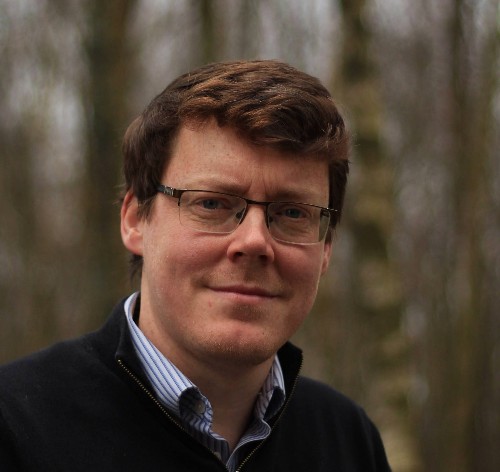
Dr Michael Hughes
About
Endoscopic microscopy and imaging, Point-of-Care Imaging, Holographic Microscopy
Research interests
My lab develops high-resolution imaging technology for biomedical applications. Our focus is on making microscopic imaging more accessible and practical in non-traditional settings such as point-of-care imaging. We aim to use computational imaging techniques to achieve performance similar to large and expensive bench-top microscopes, but in a low-cost, small form-factor device.
Endoscopic Microscopy - Endoscopic microscopes (or endomicroscopes) allow us to image tissue at high resolution. My lab works on the development of new techniques for fibre bundle based endomicroscopes, with a focus on enhancing the resolution and optical strengthening power, and on making devices lower cost and more accessible. As a postdoc at Imperial College, I developed a technique for achieving very high frame rate optically-sectioned fluorescence endomicroscopy and at Kent we have recently developed a new approach which allows a computational sectioning technique, structured illumination endomicroscopy, to be used with a moving probe. I also have an interest in simple white light microscopy via fibre bundles.
Microscope in a Needle - To build a useful needle microscope, able to image deep inside tissue with minimal invasiveness, we need to make a high-resolution image conduit which is less than a few hundred microns in diameter. With funding from EPSRC, we are exploring ways of transmitting images through single-core multimode fibres by exploiting interference between the fibre modes.
Robotic Microscopy - While working at the Hamlyn Centre for Robotic Surgery at Imperial College London I developed an interest in robot-guided imaging probes. I am currently collaborating with Prof Adrian Podoleanu at Kent and a team from the Hamlyn Centre on the REBOT Project (Robotic Endobronchial Optical Tomography) to develop robot-guided imaging probes, particularly for the lung.
Holographic Microscopy - Holographic microscopy is a type of computational microscopy in which the phase of light can be recovered. This provides information about samples which are transparent, and so difficult to see by conventional microscopy, but also allows us to numerically refocus an image (a single image can be focused to any position we wish). We are investigating applications of holographic microscopy in applications such as microfluidics, as well as developing miniature holographic microscopes.
Optical Coherence Tomography (OCT) - Kent’s OCT research is led by other members of the Applied Optics Group but I maintain an interest in this area and collaborate on projects relating to endoscopic OCT and speckle reduction in OCT.
Teaching
I teach on the physics undergraduate programme, including the Stage 1 special relativity lectures in PH304 and part of the Stage 1 electricity and light module PH322. I convene the final year MPhys project and I also teach a small number of lectures on PH800 Biomedical Optics, offered to postgraduate students in the Applied Optics Group.
Supervision
Research Opportunities in Biophotonics: I am always happy to speak with potential MSc and PhD candidates (for degrees in Physics) about self-funded study or applying for external funding, please get in touch. Funded positions will be advertised when available. I am able to host a small number of undergraduate students in the lab over the summer vacation, please contact me well in advance to discuss. For Kent Physics students I also supervise 1-2 undergraduate PH700 research projects each year, again please get in touch if you would like to discuss potential projects.